If you’re letting neck pain hinder your performance with biking, working at your computer, playing volleyball, reading, CrossFit WOD’s, hiking, running, swimming, football, wrestling, or anything else, this article is for you! If you’ve lived with mild to moderate neck pain for longer than a month or severe neck pain for any amount of time, read further as this article will inform you what may be causing your pain, what symptoms these various conditions can cause, and how you can treat it yourself or if you need the assistance of a healthcare professional.
Common Causes
First of all, neck pain is usually localized around the cervical spine. The cervical spine is medical term for the neck. It includes the muscles in the region of the C1-7 vertebrae (pictured below). The most common causes of neck pain in people is either muscle tension, arthritis, or disc herniations. Some of the neck muscles that can cause tension & pain can be visualized below. The levator scapulae, upper trapezius, cervical spine paraspinals, scalenes, sternocleidomastoid, & suboccipital muscles are common neck muscles that can cause pain, tension, & limitations. Cervical spine muscle tension is usually caused by long term poor posturing, inactivity for long periods of time, & whiplash injuries, such as in a car accident.
Arthritis occurs when the intervertebral discs between the vertebral bones degenerate. The job of intervertebral discs is to cushion the spine & bear weight. They’re also NOT innervated so they aren’t painful when compressed. If these start to deteriorate, as with arthritis, the vertebral bones can touch & rub which causes pain as bone is innervated. Arthritis usually comes on with time & wear & tear from poor posturing, repetitive work overhead, or repeated heavy lifting.
Disc herniations can be & likely are the most severe of these conditions. The intervertebral discs are kind of like a jelly donut, made of a squishy inside called the nucleus pulposus & firm outside called the annulus fibrosus. The annulus’s job is to hold the nucleus pulpous within the disc. When a lot of pressure is put on the intervertebral disc, usually on the front side of the disc, the nucleus pulposus can push through into the spinal canal & put pressure on the spinal cord or nerve roots coming off the spinal cord that supply innervation to the rest of the body. These injuries are usually caused by sudden twisting, sudden blows to the head, such as in football or a car accident, or long term poor posturing, such as with all day sitting work at a desk.
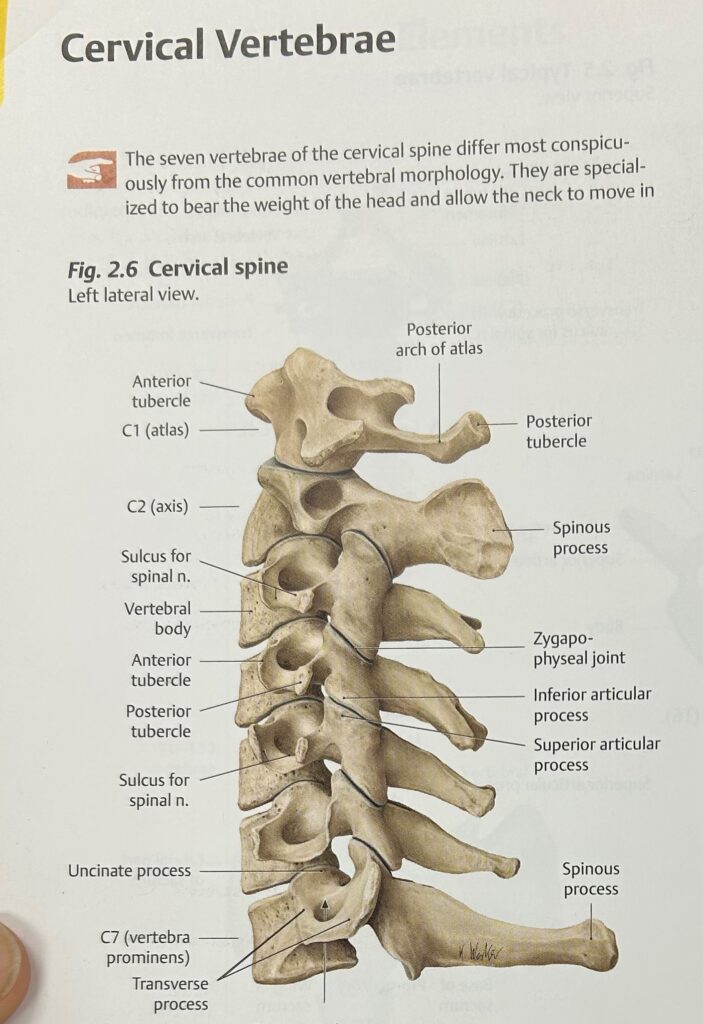
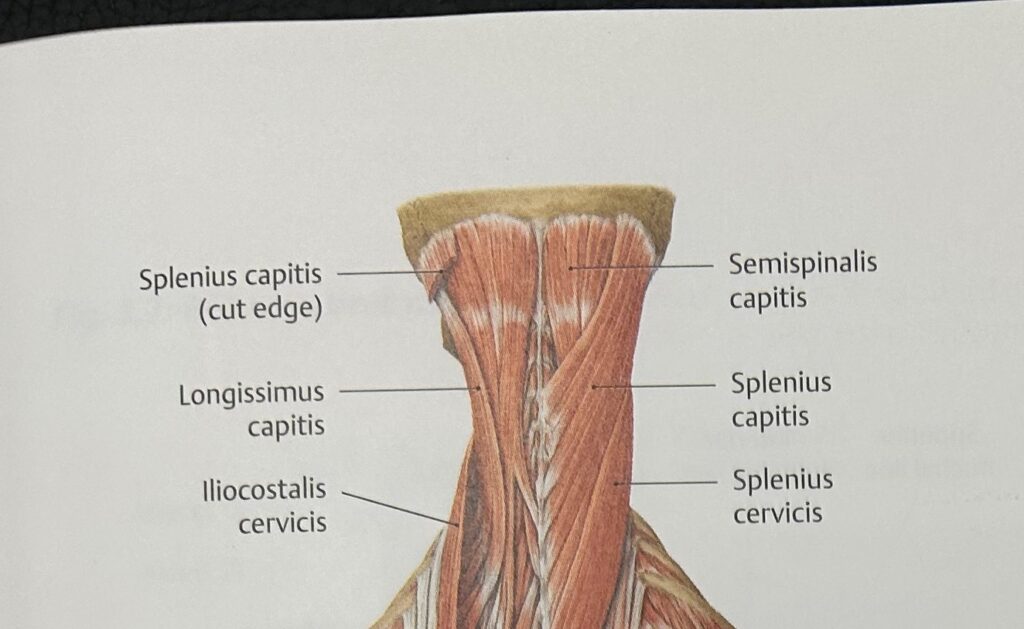

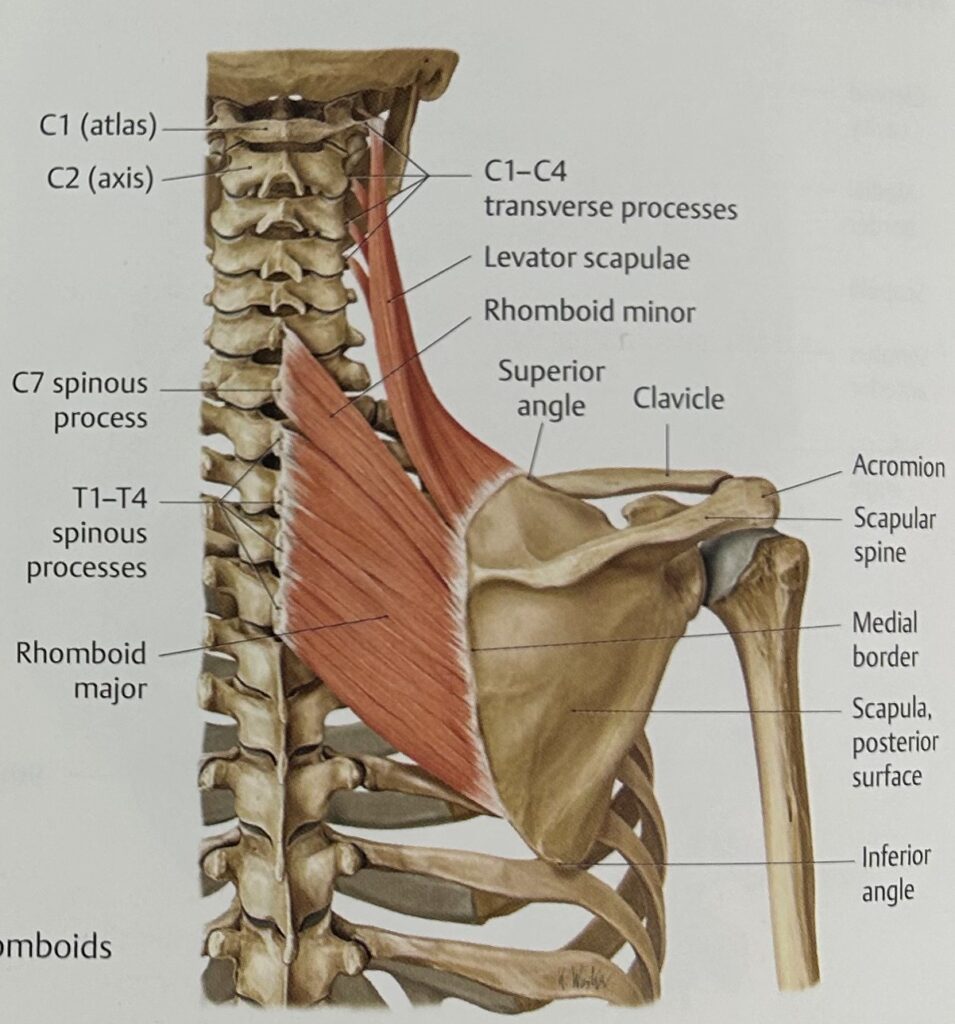
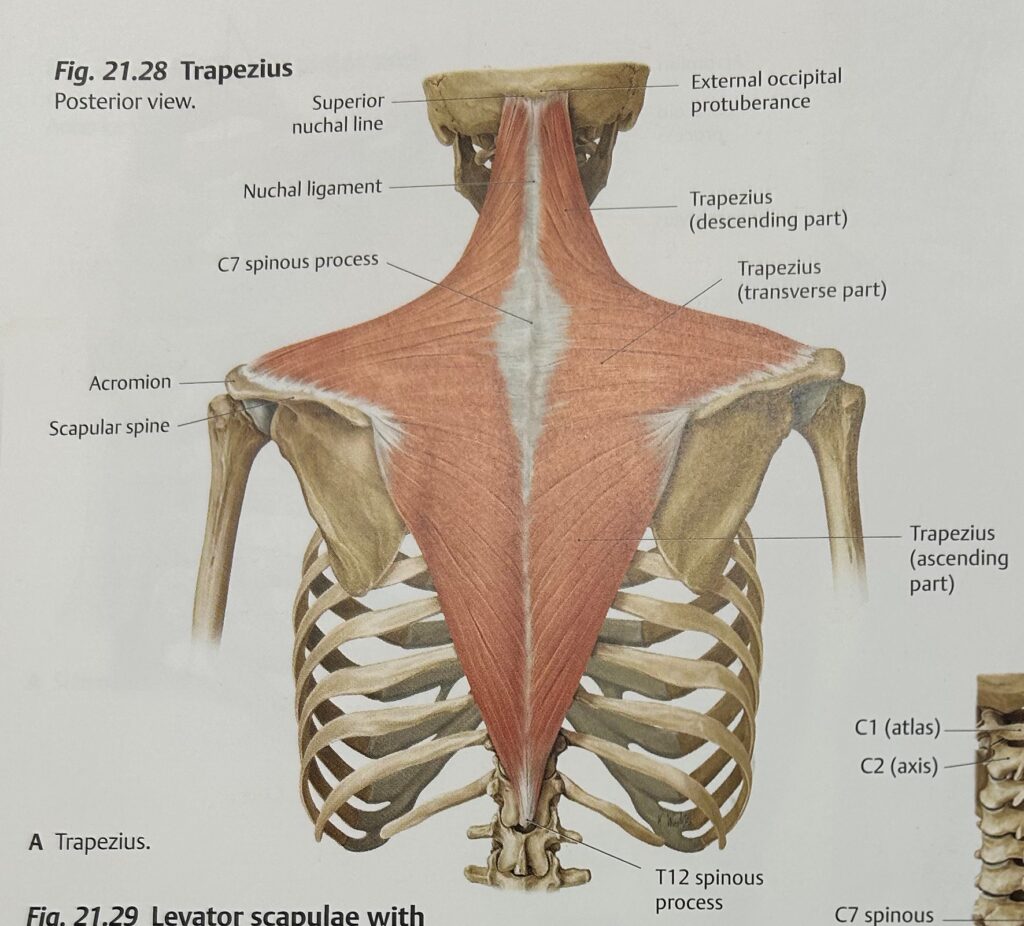
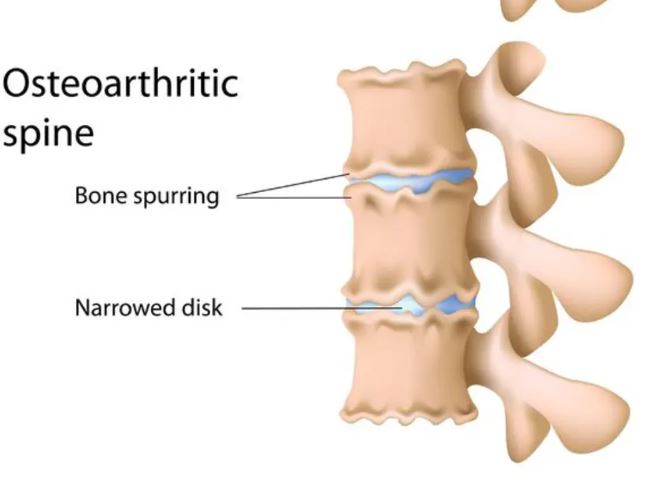
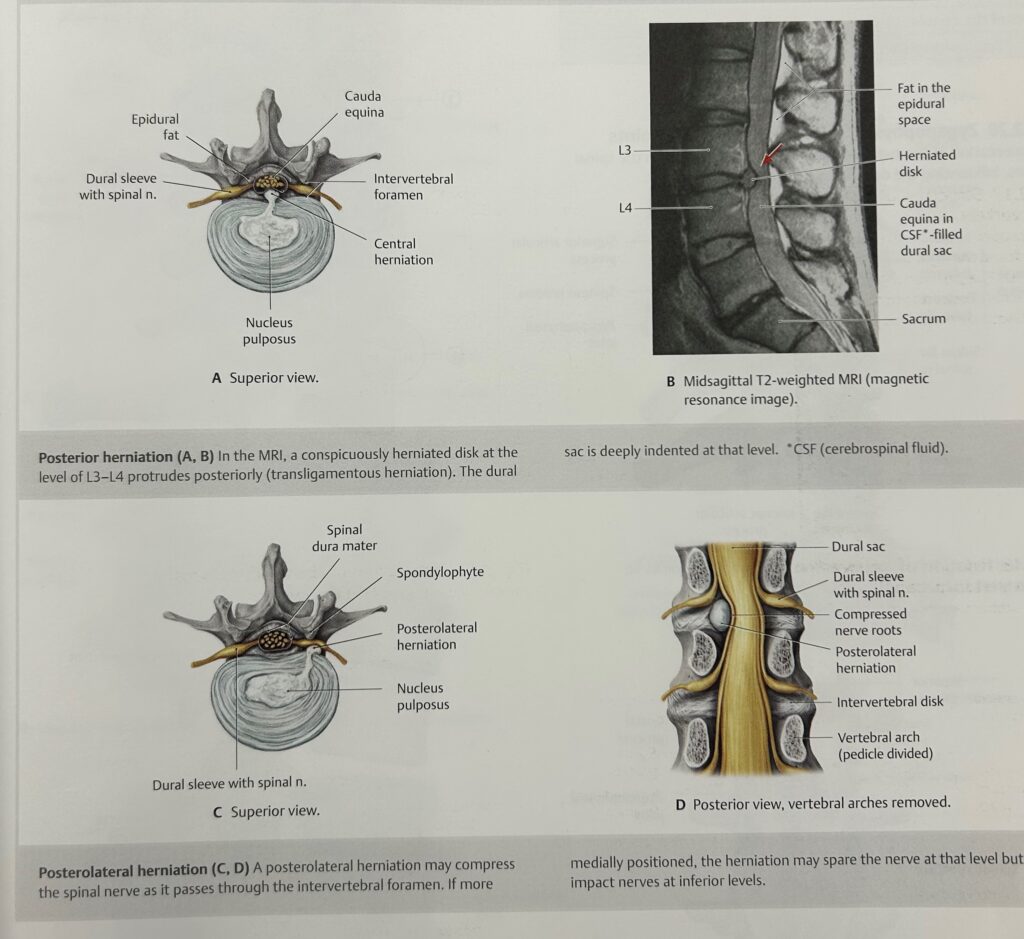
Symptoms
These 3 common cervical spine conditions can cause various symptoms. Some overlap, but the combination of symptoms are unique to that condition. Not all of these symptoms are always present because every body is different & sometimes symptoms are different than listed. That being said, usually symptoms of cervical spine muscle tension usually consist of headaches that follow a ram’s horn pattern from the base of the neck over the top of the head towards the eyes & temples. Other symptoms include numbness, tingling, achy, tight, sharp, or spasming pain radiating through the neck, shoulder blades, & shoulders. Usually these symptoms are worsened with inactivity & improved with activity/being warmed up.
Symptoms of cervical spine arthritis consist of achy, dull, numb, & tingling pain radiating to through the neck, shoulder blades, shoulders, & arms at times. Usually this condition isn’t consistent with headaches. Inactivity can also make this condition worse & activity/being warmed up usually makes it better.
Last, but not least, symptoms of disc herniations include ram’s horn pattern headaches & various pain sensations including achy, sharp, shooting, stabbing, burning, numbness, tingling, & more radiating through the neck, shoulder blades, shoulders, & arms. In extreme cases people can have difficulties with balance & leg weakness.
Notice: If you’re experiencing sudden balance deficits, leg weakness, or difficulty controlling bowel or bladder function that has come on with your neck pain, see a doctor immediately. You may need an emergency room or urgent care rather than a visit with your primary care provider.
Treatment
All these conditions are to be treated conservatively first. Conservative treatment includes combinations of physical therapy, medication, cortisone injection, or trigger point injection. Sometimes imaging is required to check for fracture or a more severe condition (such as the disc herniation mentioned above). Surgery is the last resort & should be avoided at all costs as many continue to suffer neck pain life long even after surgery, are unable to move their neck through full motion, & the neck muscles weaken making it difficult to return to regular activity.
That being said, it is widely recommended that patients suffering cervical spine pain try physical therapy to address their pain. Each person’s case is different based on what is causing their pain, but the exercises listed below are a good starting point that can help people address their pain immediately.
Other things that can help reduce neck pain is ice after exercise or activity. This is helpful to decrease inflammation & pain. This is especially helpful if you’re suffering a disc herniation. Heat before or after exercise can help calm muscle tension & bring fresh blood flow to an affected area. This is best for muscle tension & arthritis. Some people take over-the-counter pain medication like ibuprofen, Tylenol, or Aleve to help with pain too. Getting massages can help reduce tension & prevent pain as well. Lastly, don’t do things that push you through a mild about of pain. In health care, we rate people on the VAS scale for pain 0-10. 0 = you have no pain. 10 = the worst pain you’ve ever experienced & you have to go to the hospital because it’s so bad. If your pain gets worse than a 3/10 while doing activities around the house or exercising, you will want to stop that activity as it will likely set back your progress.
What Next?
We hope this article was helpful, informative, & you’ve learned how to manage your pain a little better. If you try some of these tips, chiropractics, see a doctor, get an injection, even if you’ve already tried physical therapy & you still haven’t found relief, it might be time to talk to someone on the team at Inside Track Physical Therapy & Wellness as you may need more specialize, focused therapy to return to sports, regular exercise & other more active endeavors than just doing house work & getting groceries. You can make an inquiry phone call, video call, or in person visit by clicking below to talk to a licensed physical therapist on our team. These calls are free, 30 minutes, & give you time to talk to a licensed physical therapist that can help you with what next steps will be helpful to you & your improvement.
If you want to be active, but you’re in pain, we can help!
References
- Schuenke M, Schulte E, Schumacher U. Atlas of Anatomy. 2nd ed. (Gilroy AM, MacPherson BR, Ross LM, eds.). New York, NY: Thieme Medical Publishers, Inc; 2012.

